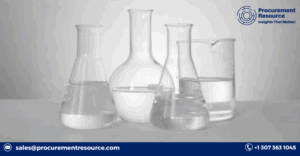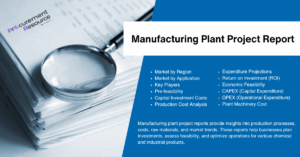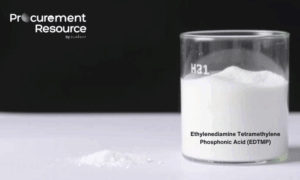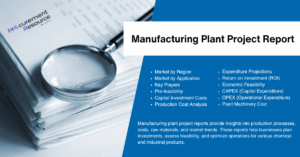Cod liver oil is a popular dietary supplement rich in omega-3 fatty acids, vitamin A, and vitamin D, which offers numerous health benefits. It is commonly used to support heart health, boost immune function, and promote bone health. Given the growing demand for natural health products, cod liver oil production is a significant industry with a complex cost structure.
Cod liver oil is typically derived from the liver of Atlantic cod, and its production involves a series of steps to extract and refine the oil, ensuring that it meets quality and safety standards. This article examines the various costs associated with cod liver oil production cost analysis and explores strategies for managing and reducing these expenses.
Key Components of Cod Liver Oil Production Cost
The cost of producing cod liver oil is influenced by multiple factors, ranging from raw materials to packaging and distribution. These costs can be categorized into several major areas: raw materials, processing, labor, equipment, energy, regulatory compliance, and waste management.1. Raw Material Costs
- Cod Liver: The primary raw material for cod liver oil is cod liver, sourced from Atlantic cod. The cost of cod liver depends on the availability of cod, fishing regulations, and the sustainability of fish stocks. Seasonal variations and environmental factors can affect the supply and price of cod liver.
- Supplementary Ingredients: Some cod liver oil products include additional ingredients, such as antioxidants (e.g., vitamin E) to prevent oxidation, or flavoring agents to improve palatability. The costs of these supplementary ingredients add to the overall raw material expense.
2. Processing Costs
- Extraction: Cod liver oil is typically extracted using one of two methods: cold processing or heat-based extraction. In cold processing, the oil is extracted without heat, preserving the oil’s natural properties, but this method is more costly due to lower yields. Heat-based extraction involves steaming the liver to release the oil, which is a faster and more cost-effective method but may reduce the quality of some nutrients.
- Refining and Purification: The raw oil undergoes refining and purification to remove impurities, toxins, and heavy metals. Purification methods, such as molecular distillation, are used to ensure that the oil meets safety standards. This stage adds to production costs, as it requires specialized equipment and energy.
- Deodorization: Many cod liver oil products undergo deodorization to remove the strong fishy odor, making them more palatable for consumers. This process involves heating the oil under a vacuum to remove volatile compounds. Deodorization requires additional equipment and energy, contributing to processing costs.
3. Labor Costs
- Skilled Labor: The production of cod liver oil requires skilled workers, such as technicians and quality control specialists, to oversee the extraction, refining, and packaging processes. Labor costs depend on the location of the production facility and the availability of skilled workers.
- Quality Control and Testing: Cod liver oil production involves rigorous quality control to ensure that the product meets safety and nutritional standards. Quality control personnel are responsible for monitoring the production process and conducting tests for contaminants, such as heavy metals and PCBs. This adds to labor costs and requires specialized testing equipment.
4. Equipment and Maintenance Costs
- Extraction Equipment: The machinery used for extracting oil from cod liver, such as steamers, centrifuges, and decanters, represents a significant capital investment. The cost of extraction equipment varies based on the production scale and extraction method. Regular maintenance is essential to keep equipment functioning properly, adding to operational expenses.
- Purification and Filtration Systems: Purification systems, such as molecular distillation units, are used to remove contaminants and ensure product purity. Filtration equipment is also necessary to separate impurities from the oil. These systems require ongoing maintenance and periodic replacement of parts, contributing to production costs.
- Packaging Equipment: Cod liver oil is often packaged in soft-gel capsules or bottles, requiring specialized packaging equipment. Packaging costs include machinery for filling, sealing, and labeling, as well as the materials used, such as capsules, bottles, and labels. Packaging machinery must be maintained and regularly inspected to ensure product safety and quality.
5. Energy and Utility Costs
- Electricity and Fuel: The production of cod liver oil requires substantial energy, particularly for heating, steaming, and operating machinery. Energy costs depend on the local cost of electricity and fuel, which can fluctuate based on market conditions and geographic location.
- Water: Water is essential throughout the cod liver oil production process, from cleaning the raw liver to operating steamers and cooling systems. The cost of water depends on regional availability, and in some areas, water treatment may be necessary to comply with environmental regulations.
- Wastewater Treatment: Wastewater generated during processing must be treated before disposal, as it can contain organic materials, fats, and other byproducts. Wastewater treatment facilities are necessary to manage this waste, and the cost of treatment varies based on the volume of water used and the regulatory requirements in the area.
6. Regulatory Compliance Costs
- Health and Safety Standards: Cod liver oil production must meet health and safety standards set by regulatory agencies, such as the U.S. Food and Drug Administration (FDA) or the European Food Safety Authority (EFSA). Compliance involves testing for contaminants, such as heavy metals and pesticides, and ensuring that the product meets nutritional labeling requirements.
- Environmental Regulations: In many regions, cod liver oil producers must comply with environmental regulations regarding waste disposal and emissions. Compliance may require investment in pollution control systems and waste treatment facilities, adding to the overall cost.
- Documentation and Reporting: Regulatory compliance often requires detailed record-keeping and reporting to document the production process, ingredient sourcing, and testing results. Maintaining these records involves administrative labor and may require dedicated software systems, adding to operational expenses.
Environmental and Waste Management Costs
The production of cod liver oil generates various waste materials, including solid waste, organic byproducts, and wastewater. Proper disposal and management of these waste materials is essential to meet environmental standards and minimize the impact on local ecosystems.- Solid Waste Disposal: Cod liver oil production generates solid waste, such as fish residue and packaging materials. Proper disposal of solid waste may involve composting, recycling, or transporting waste to a designated disposal site. Waste management costs depend on the volume of waste produced and local disposal fees.
- Organic Byproducts: Organic byproducts from the oil extraction process can sometimes be repurposed, such as being used in animal feed or fertilizer. However, if the byproducts are not reusable, they must be disposed of, which adds to production costs. Some facilities invest in waste-to-energy systems to reduce disposal costs and generate renewable energy.
- Effluent and Emissions Control: The wastewater generated in cod liver oil production must be treated to remove contaminants before being released into the environment. Effluent treatment involves processes such as filtration, sedimentation, and chemical treatment. Compliance with environmental regulations may also involve controlling emissions from boilers or other equipment, adding to operational expenses.





